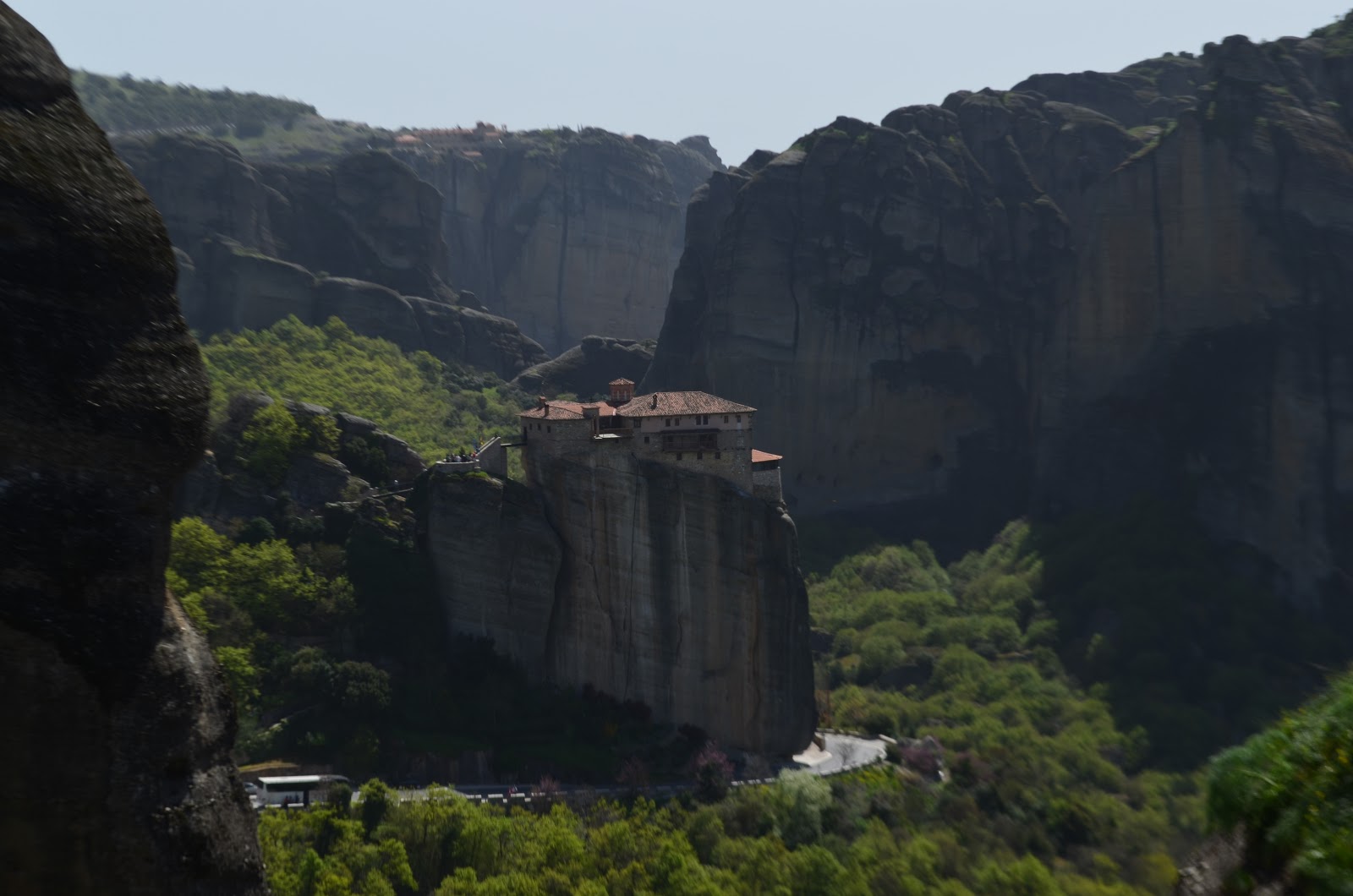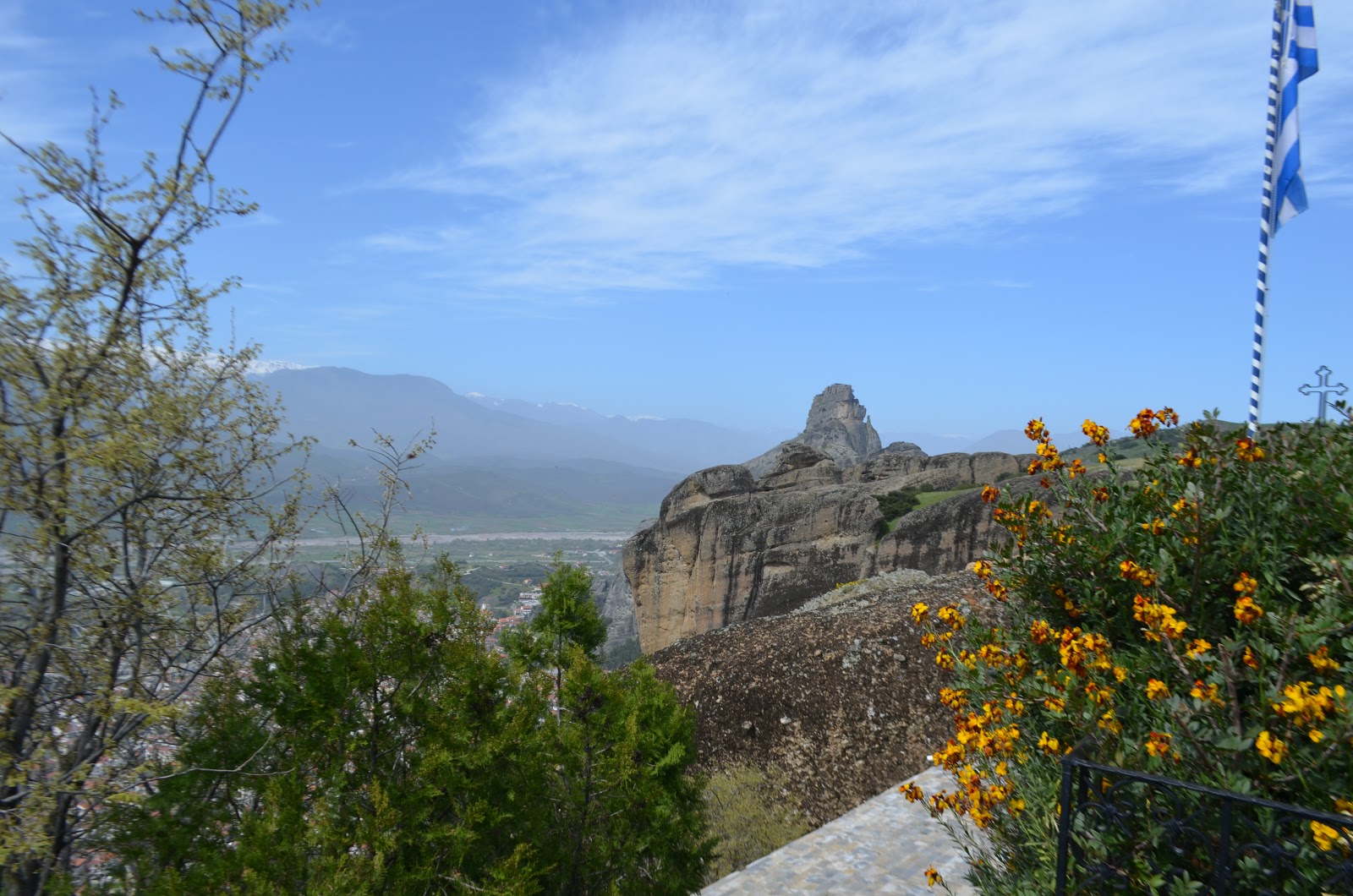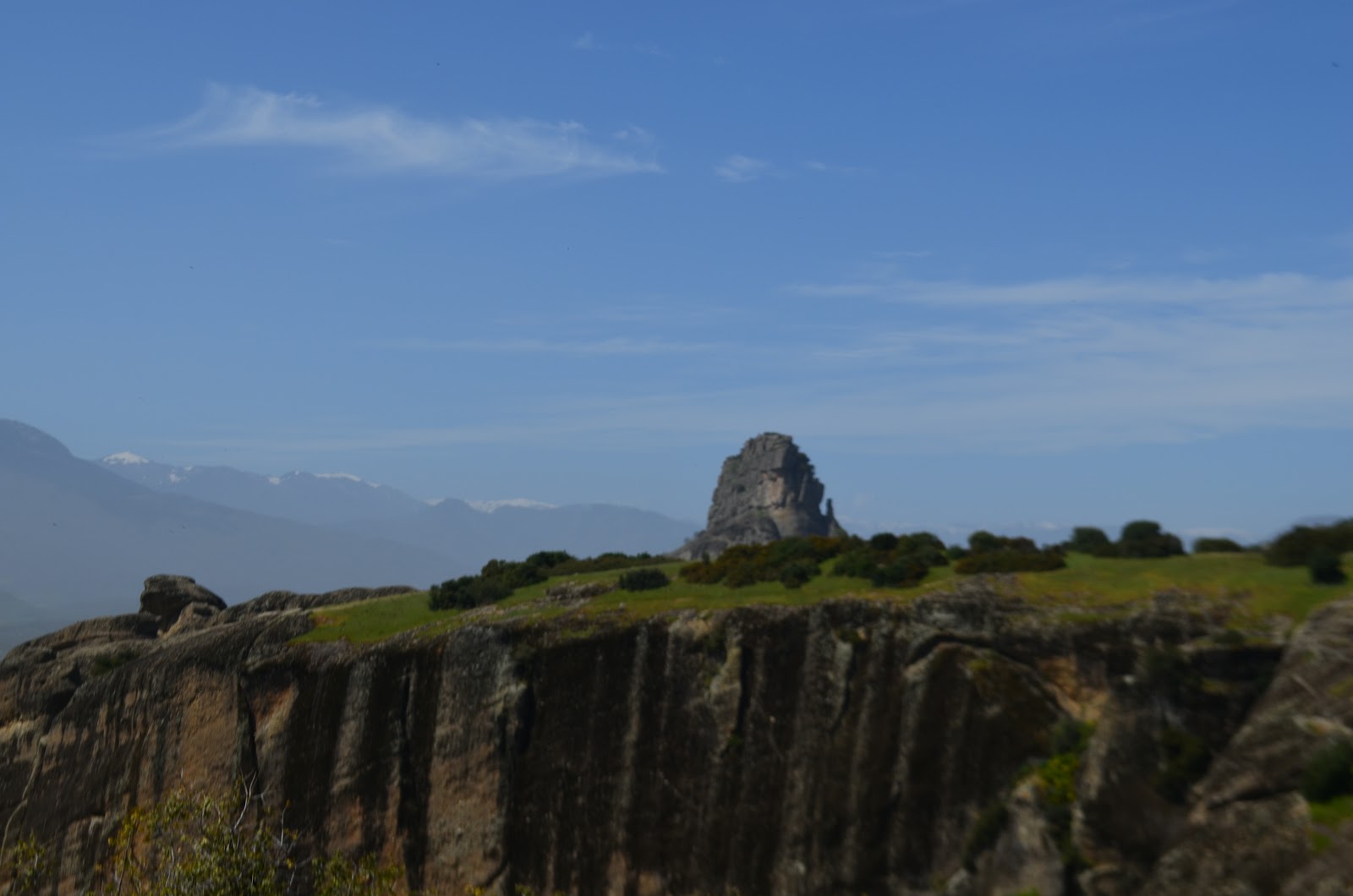In my last post, I left you in the shadow of Mt. Olympus as we took a detour from "the footsteps of St. Paul" to visit the Greek Orthodox monasteries of Meteora. At one time, there were more than 30 active monasteries of Greek Orthodox monks or nuns. Today, there are only 9 active monasteries, some with as few as 2 or 3 monks or nuns. At one time, there would have been hundreds of monks or nuns in some of these monasteries. Many of the monasteries were destroyed by the Ottoman Turks during the more than 500 years that the Ottoman Turks ruled Greece. The monasteries were built as secure havens on top of craggy precipices of the mountains above the town of Kalambaka. Today, roads lead part way to the monasteries, then you climb hundreds of stairs; however, some are totally inaccessible by car or bus. For those which are inaccessible by car or bus, you either walk or climb up to the top of the precipices, or use the method used by the monks when these were active monasteries, by being pulled up or lowered in a net basket. Some of the monasteries are open to the public. Others are either simply inaccessible or closed to the public, even though there will be either nuns or monks still living in the monasteries. When all of the monasteries were active, the caves of the mountains (of which there are many!) were also used by hermits who were associated with the monasteries in some fashion.
On the aesthetic side, the monasteries, the physical beauty of the landscape, and the atmosphere of the mountain tops are majestic, serene, and stunningly beautiful. None of the many pictures which I will attach to this posting will capture all of those qualities. This is literally a place you must visit to appreciate its grandeur.
On the religious side, the icons and mosaics inside each of the churches of the monasteries are exquisite. Some of them are hundreds of years all and are as inspiring now, as I am sure when they were when they were originally written or crafted. (FYI, icons are "written," not painted because they are intended to communicate what is divine and sacred.) Unfortunately and understandably, photos were not allowed to be taken inside the churches.
 |
| View of the town of Kalambaka from one of the monasteries we visited. |
 |
| View of the town from the terrace with the icon (above). |
 |
| With Scott Brodeur, S.J. |
 |
| Take note of the monastery on the top of the rock formation. |
 |
| From the platform at the top of the building monks would be pulled up or lowered to the ground below. More photos of this to come... |
 |
| With our Greek tour guide, Barbara. |
 |
| Rafters of the platform tower. |
 |
| The platform from which the monks would pull up or lower supplies to the monastery or the ground below, far below! |
 |
| Barbara shows us the net "basket" in which the monks would sit to be pulled up to the monastery or lowered to the ground. |
 |
| This photo gives you an idea of the height of the platform to the ground! A more thrilling ride than anything in Disneyland! |
 |
| Another view of the cliff below the platform. |
We ended our visit to the monasteries of Meteora with lunch in the town of Kalambaka, before returning to Thessaloniki. The following day we flew to Athens...









































No comments:
Post a Comment